Richard Branson, a British business magnate, once shared his amazing experience with kitesurfing. He said, "Kite surfing is a great way of keeping fit. Kiting is great because you're bouncing over the waves and you're surfing the waves.”
If you are also one of such adventurous souls who want to experience such a thrill in life then you must try kitesurfing once in a lifetime. But before that, we first have to learn its basics. With the help of trainer kites for kitesurfing, you can easily start this thrilling activity on the water.
In this blog, we will discuss what can be the important factors that you should consider when you choose trainer kites for kitesurfing. So without any further delay, let’s roll into this.
Why Choose Trainer Kites for Kitesurfing in the US
For a thrilling sport, like Kitesurfing, you can combine the thrill of surfing with the art of kite flying. But before you ride the waves like a pro, firstly, you need to master its basics with a trainer kite. Selecting the perfect trainer kite is very important to your kitesurfing journey.
Here are some crucial points that you should consider while choosing the perfect trainer kites:
Basics of Trainer Kites
Before we move ahead, we first understand what trainer kites are. So basically they are smaller and more manageable than full-sized kitesurfing kites. It makes them super perfect for beginners as they help in developing essential skills such as kite control, power management, and safety techniques.
Now, you may be figuring out that with so many options available on the market, how do you choose the right one for you? Don’t stress, read the below-mentioned factors:
- Will you be practicing on land or water? If you're starting on land, an open-cell model is ideal and more budget-friendly.
- Trainer kites come with 2, 3, or 4 lines. More lines offer more control and are closer to what you'll experience with full-sized kites.
- The size of your kite will depend on your weight and the wind conditions. Generally, a 2 to 2.5-meter kite is suitable for most beginners.
- Look for a kite with an intuitive steering system. This will make your learning curve smoother and more enjoyable.
- Some trainer kites require a harness. Decide if you want to practice with or without one based on your comfort level.
- Trainer kites vary in price. Set a budget and find a kite that offers the best value for your money.
- Consider whether you'll use the trainer kite down the line. Some can be used for other sports like snowkiting or landboarding.
Pro Tip: Choose KiteLine, a one-stop destination for buying quality products for kiteboarding and wing foiling in the US. You can explore and shop for kiteboarding and kite foiling equipment from leading brands such as Naish, Cabrinha, and Slingshot on our platform.
It’s Time to Make the Right Choice
Now that you know what to look for, it's time to make your final choice. Remember, the best trainer kite is the one that fits your individual needs and also helps you progress safely and confidently.
With the right trainer kite in hand, you're all set to begin your kitesurfing adventure. So practice carefully, respect the wind, and soon you'll be carving the waves like a pro kiter.’ Be ready to take the leap and choose your trainer kite today and embrace the wind.
Landboarding with Trainer Kites
If you are a little nervous about trying kitesurfing then you can start with landboarding. It is another exciting way to enter the world of kite sports. In this sport, you can ride a mountain board or landboard while being pulled by a kite.
This will also allow you to experience the thrill of kiting but on land. It can be a great stepping stone to kitesurfing. So if you want to try landboarding then do remember all these points:
Getting Started with Landboarding
- You'll need a power kite, a landboard (similar to a mountain board), and protective gear such as a helmet and pads.
- Before hitting the landboard, you should become proficient in flying a trainer kite. This will teach you the basics of kite control, which is crucial for landboarding.
Choosing the Right Location
- Look for a large, open area with steady wind and no obstacles like trees or buildings that could affect the wind flow.
- Hard sand or grassy fields are ideal surfaces for landboarding. Make sure the terrain is suitable and free of hazards.
Mastering the Basics
- Initially, you'll learn to ride downwind, which is easier as you're moving in the direction of the wind.
- As you progress, you'll learn to ride upwind, which requires more skill and control over the kite and board.
Safety First
- Always wear appropriate protective gear to minimize the risk of injury.
- Assess the wind conditions, and tide (if on a beach), and ensure you're using the correct equipment for the conditions.
Advancing Your Skills
- Once you've mastered the basics, you can start learning tricks and even attempt jumps. Landboarding offers a wide range of maneuvers to explore.
- Consider taking lessons from a qualified instructor to speed up the learning process and get tips on technique and safety.
Landboarding with trainer kites can also be an excellent way to harness the power of the wind on land. Whether you're looking to transition to kitesurfing later or just want to enjoy a new sport, landboarding has something to offer for everyone. But don’t forget to practice safely before you start your ride.
Closing Thoughts!
Reading this blog was informative for you and helped you to figure out the important factors to consider when you choose trainer kites for kitesurfing. Moreover, we have also explored landboarding which is another thrilling activity that you can try with the power of kites.
So get ready to unlock the thrill of kites whether you want it on the water or land. Also, don't forget to share your adventurous experience with us as we love to hear from our readers!
Last but not least don't forget to shop from KiteLine and get a chance to avail the exciting shopping offer for Slingshot foil, Slingshot kite, and more.

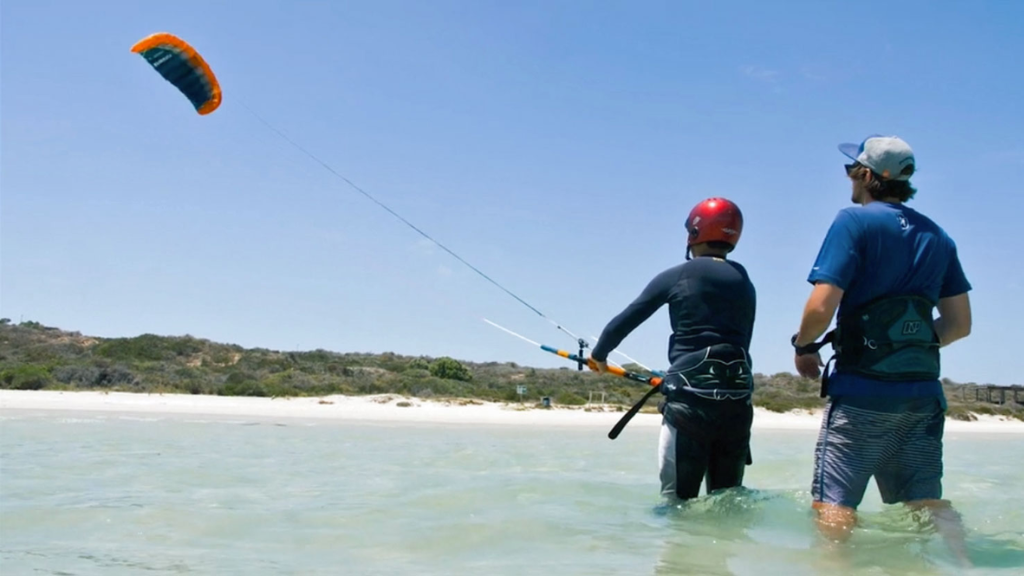


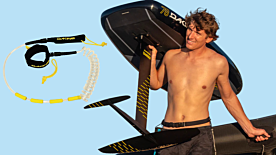
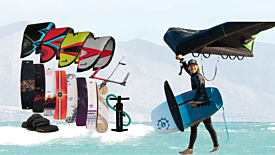
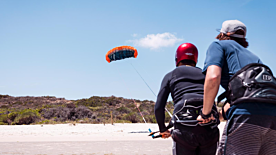
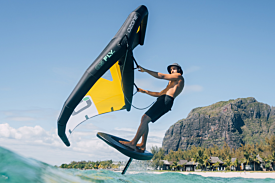
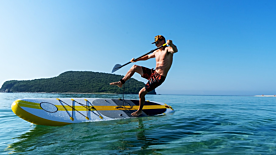
Validate your login